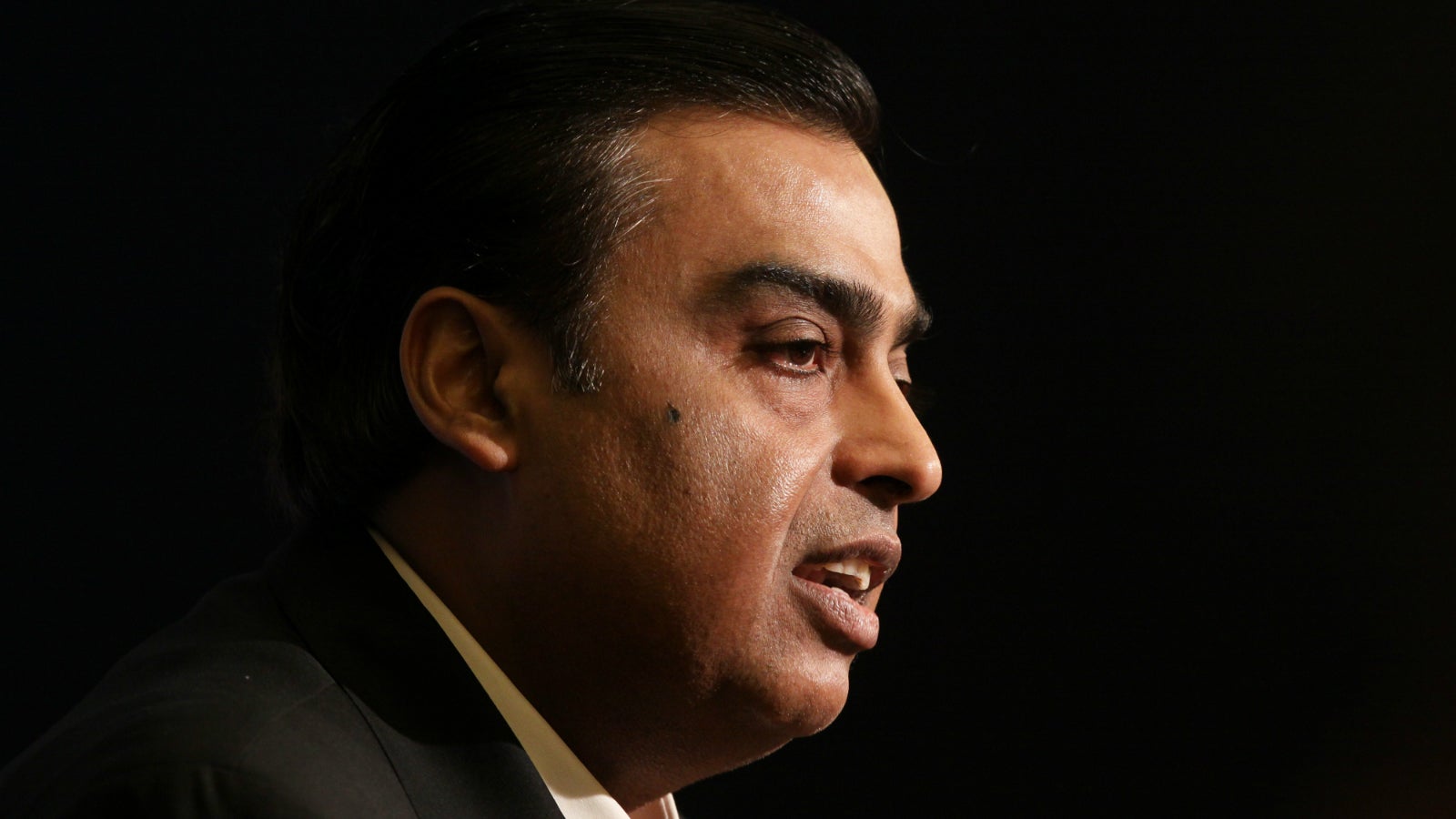India’s richest man and his company make a killing out of plummeting crude
Reliance Industries (RIL), India’s largest corporate entity by assets, on Jan. 19 announced record third-quarter earnings.


Reliance Industries (RIL), India’s largest corporate entity by assets, on Jan. 19 announced record third-quarter earnings.
The Mumbai-headquartered company’s profit rose 39% to Rs7,290 crore ($1 billion) in the October-December 2015 quarter over the same period in 2014. While RIL also saw a 24% decline in revenue to Rs73,300 crore, that had very little impact on profits.
That’s mostly because RIL managed to improve its gross refining margin (GRM)—the difference between the price of crude oil per barrel and price of finished products—to about $11.50 a barrel. This was the highest GRM in seven years.
“Refining business delivered yet another record performance on the back of seven-year-high margins and the highest-ever crude throughput,” RIL chairman Mukesh Ambani said in a statement (pdf). “In the current nine-month period, our refining business earnings before interest and taxes surpassed record earnings it achieved in FY15.”
RIL’s raw material cost, essentially that of crude oil, dropped by 39.5%, thanks to the global oil glut. Brent crude price averaged around $43.7 per barrel in the quarter compared to $76.3 in the same period a year ago. On Jan. 18, crude prices dropped to less than $28, the lowest since 2003.
That is good news for Mukesh, currently India’s richest man with assets worth $22 billion.
“Any increase in refining margin helps Reliance’s profit significantly because that business is the largest contributor to the bottom line,” Sanjeev Panda, an analyst at the Mumbai-based brokerage, Sharekhan, told Bloomberg.
Rich, richer, richest
RIL was started by Mukesh’s father, Dhirubhai Ambani, in 1966 to manufacture textile products. It has since diversified into petroleum, retail, and even media. With growing petroleum refining margins and anticipation over its 4G business foray, shareholders are once again flocking towards RIL.
And that is showing on Mukesh’s wealth. Just this month, his fortune swelled by a staggering $620 million, according to the Bloomberg Billionaires index. “The launch of projects worth $30 billion across segments will make 2016 the biggest year in Reliance’s history,” Vikash Kumar Jain, an analyst at CLSA, said in a report earlier this month.
RIL has already spent some Rs70,000 crore ($11 billion) on setting up infrastructure for the 4G services. With 4G LTE smartphones priced under Rs4,000 ($62.4) and a subscription plan costing between Rs300 and Rs500 a month, Mukesh plans to unleash a big disruption in India’s telecom sector.
Given the record numbers in the quarterly results, it seems 2016, when RIL celebrates its 50th birthday, couldn’t have begun better.